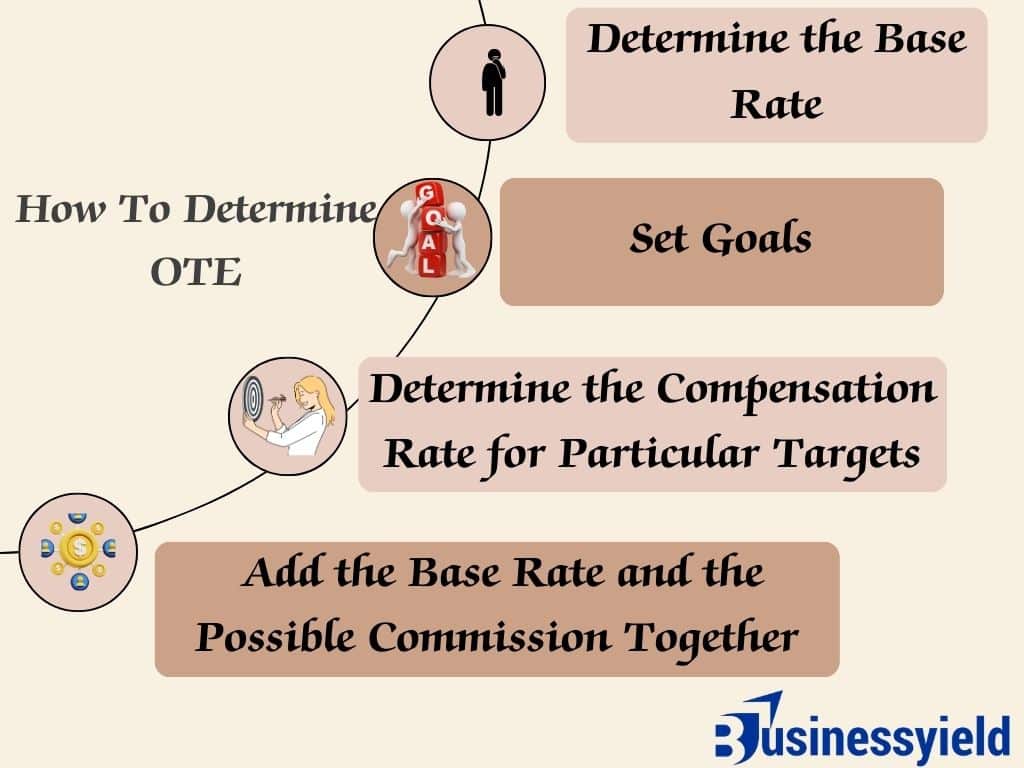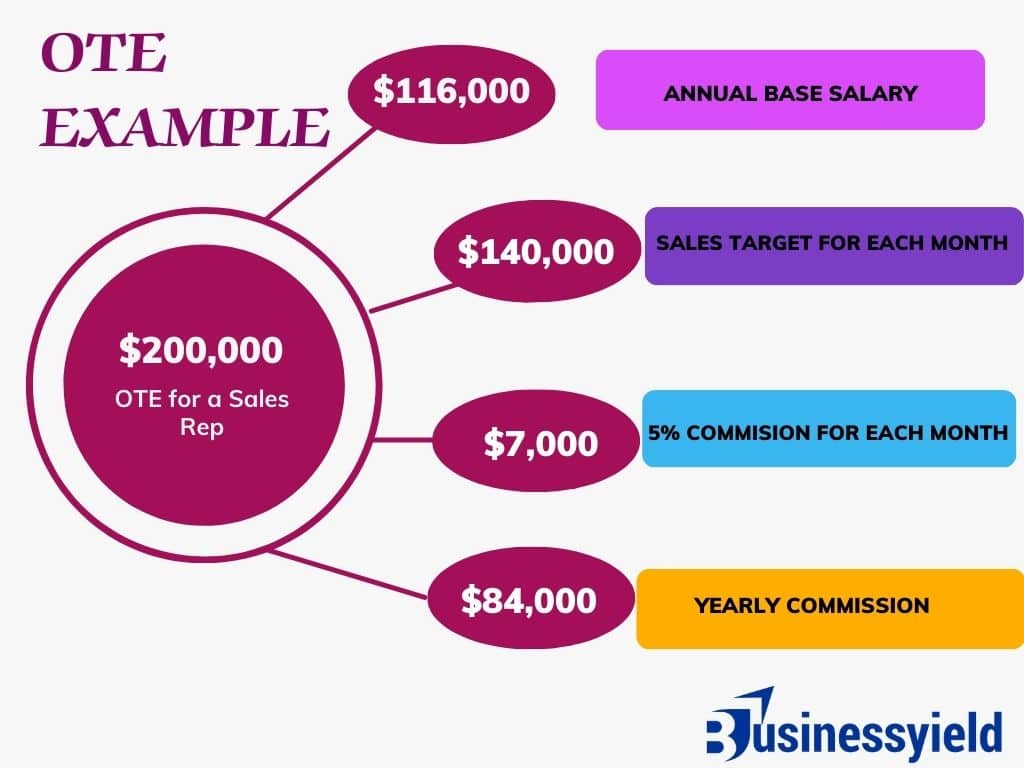An important question to ask while looking for a sales job is the on-target earnings (OTE) for the position. If you reach your quota in full, you can anticipate earning your OTE. It is critical for sales professionals and employers to grasp OTE because it provides a clear image of what they want to earn while motivating them to achieve their objectives. It enables firms to create a competitive wage package to retain the finest staff.
When I started working for a publishing company, Inkwell Press, one of my responsibilities was assisting the sales representatives in meeting their quotas. I remember that my first significant bonus came when I surpassed my OTE; that experience motivated me to work harder in sales.
Everything from the thrill of accomplishing goals to the accompanying praise is important, and I realized that it’s not only about the bonus. However, are OTE jobs worth it? Find out as I will take you on the journey to understand on-target earnings (OTE) and the examples.
Keypoints
- OTE comprises the basic salary and any extra commissions received by a sales staff member. It leaves out payments that workers receive for things like benefits, overtime pay, or one-time bonuses.
- Employers also use on-target earnings to inspire their staff and encourage them to reach certain business objectives
- To determine your OTE, you need to determine the base rate, set goals, determine the compensation rate for particular targets, and add the base rate and the possible commission together
- To ascertain whether OTE jobs are worth it, you need to perform due diligence when researching firms. If a potential employer has been celebrated for transparency and their sales targets appear sensible, you’ll probably be in excellent hands.
What Is OTE in Sales?
The compensation that a sales professional might anticipate receiving if they meet their performance targets is known as on-target earning or OTE. OTE comprises the base salary and any extra commissions received by a sales staff member. It leaves out payments that workers receive for things like benefits, overtime pay, or one-time bonuses. Sales agents can evaluate their possible commissions for a position with the help of OTE.
Additionally, OTE is a critical tool for sales firms in creating attractive compensation plans that draw in and keep top sales personnel. Businesses may effectively communicate earning potential to prospective personnel and match expectations and motivations for optimal performance by providing a clear definition of OTE and its components.”
My sales representative experience defining OTE inspired me to recognize and develop my skills. It also helps prospective employees comprehend their earning potential; once more, my team saw how our output affected our compensation.
Read Also: SALES MOTIVATION: Definition, Team, Quotes & Training
On-Target Earnings
The total remuneration that an employee is eligible to receive if they accomplish all of their performance targets is called on-target earnings (OTE), often referred to as on-track earnings. An OTE salary system is a way to pay people, that is often used as a commission reward to get salespeople to meet their goals.

To inspire your staff, you may occasionally need to use more than just words. Employers also use on-target earnings to encourage their senior staff to reach certain business objectives. Executive staff members are assigned a certain number of goals to meet by a given deadline by their employers when they are hired. The worker will be paid more for accomplishing the task effectively if they meet this objective.
Depending on the role and firm, OTEs may take the form of lump sum payments, commission percentages, or a combination of the two. How much on-target earnings to offer depends on several factors, including the level of competition in your market, the gross income of your business, and the experience of your employees.
How to Determine OTE
Most firms establish parameters for determining the possible on-target earnings for a certain position. However, OTE can be determined on a per-candidate basis. You can calculate this number based on each prospective hire’s previous W2 wages and the specific experience they bring to the table. I conducted some recruiting a few years ago while looking for a position as a sales manager.
An applicant, Mr. Jeff Thompson, caught my attention due to his remarkable experience and significant compensation for a similar role. My team and I decided to employ Mr. Jeff’s actual earnings history and pertinent work experience to ascertain his OTE rather than using the OTE range as a comparison.
With this approach, my colleagues and I were able to offer Mr. Jeff a wage that was more commensurate with their experience and more competitive. I can honestly say that this was helpful to my team in hiring a very capable sales manager. Most of the time (but not always), a sales representative’s OTE is split evenly between basic salary and commission.
Example
For example, if the OTE is $400,000, $200,000 would be the base wage (guaranteed), with the remaining $200,000 being commissions. Good sales leaders are aware of what their competitors are offering in terms of OTE. Staying knowledgeable might help you remain competitive in the talent market. No effective sales representative will quit their existing position for a lower OTE at a new company. Sales executives seeking to employ must be aggressive without misrepresenting earning potential to prospective candidates.
Most importantly, businesses must commit to the figure offered to a candidate and follow through on their promises. While it is common for firms to alter their compensation plans regularly, it would be unethical for a sales leader to lower the OTE of a candidate they have hired without first consulting the candidate. When determining OTE, I suggest an employer follow these steps:

#1. Determine the Base Rate
The first step is for the recruiting manager or employer to decide on a base salary. If a team member does their fundamental tasks to the best of their ability, regardless of whether they reach their goals or quotas, they will still earn this amount. Verify that the base income is suitable for you before applying for positions that advertise OTE.
#2. Set Goals
The employer then decides what targets each team and individual worker can meet to meet the company’s goals. I can assure you, based on my experience, that reachable goals frequently inspire workers to be effective and accomplish their objectives. If you’re looking for a job with OTE, think about whether you can meet the recommended goal. To make sure you comprehend the expectations completely, I suggest that you inquire further about this goal during the interview.
#3. Determine the Compensation Rate for Particular Targets
How much commission or extra pay a worker can get depends on their job, their goals, and the rules in the business where they work. Payment may be higher for meeting goals that are especially hard to reach. So I suggest that when looking at OTE for a new job, you should think about whether the pay is fair for the work.
#4. Add the Base Rate and the Possible Commission Together
One way for an employer to calculate the OTE is by adding the base rate and estimated commission. This number may be listed in the salary area. So I advise you to get in touch with the recruiting manager to get more information on the OTE vs. base salary for that specific position if you need clarification.
Read Also: SALES EXECUTIVE: Definition, Skill & What They Do
OTE Examples
The following are examples of OTE from my perspective as a salesperson
Example 1
I saw an On Target Earnings (OTE) structure in action during my time in a prior sales position. The publishing company I worked for advertised a $200,000 OTE for sales experts. It was $116,000 a year in base compensation plus $140,000 in sales quotas required each month. Meeting or exceeding the $140,000 monthly sales objective was necessary to attain the full OTE. A 5% commission on all sales was offered in this role. If I hit my monthly sales target, I might earn an extra $7,000 per month, for a total of $84,000 in commissions per year.

Upon combining my base wage with this commission, my OTE would approach $200,000. With this setup, the commission made up 42% of the OTE, and the base salary was 58%. One would still receive a commission of 5% on all sales, regardless of whether they made $100,000 or $90,000 in a given month. Their annual revenue would reach $170,000 after this, thanks to a commission of $54,000.
Example 2
Some years ago, I worked as a sales representative for a real estate company, I was paid a basic salary of $60,000 and had an OTE of $150,000. I had a goal of $30,000 in sales every quarter to reach my OTE. In one particularly difficult quarter, I had only a few days remaining and was barely short of my goal. I located a possible customer who had previously ignored our attempts to reach them. So, I decided to use all of my efforts, and I was able to get a meeting with them. I exceeded my quarterly OTE by not only securing their business but also upselling extra services after putting a lot of effort into my preparation and pitch. This encounter demonstrated the immediate impact
Tips for Achieving Your OTE
Regardless of whether this is your first experience functioning under an OTE system, there are effective working strategies that can facilitate the collection of your commission. The subsequent guidance will assist you in attaining your OTE:
- Divide your annual goal into monthly or weekly targets to maintain motivation and progress.
- Establish micro-goals, such as the number of leads you will secure each week or the number of individuals you will contact daily.
- Organize your activities, such as contract completion, client progress monitoring, client follow-up, and so forth, to prevent administrative excess.
- Reward yourself for achieving particular performance standards at interval checkpoints to maintain motivation.
Here is a checklist to help sales professionals achieve their on-target earnings.
BusinessYield Checklist on How to Achieve OTE
Read Also: On-TARGET EARNINGS, Simplified!!! Meaning, Calculator,& How to Negotiate OTE
Are OTE Jobs Worth it
If you’re looking for sales positions, you’ll find the OTE stated in the job description. You may be wondering whether OTE jobs are worth your time, or if you should pursue a typical salaried position.
On-target earnings will provide an accurate picture of your future rewards in transparent organizations. You’ll have a good sense of how much you can anticipate making after your base income and commission are combined. You may also use OTE to estimate how many sales you will make in a new capacity.
OTE does not inherently limit your earning potential. Rather, it specifies what you would earn if you met your targets (quota). My sales colleagues and I have exceeded our OTE many times and I know many of the best salespeople have outperformed their OTE.
So, to ascertain whether OTE jobs are worth it, I suggest you perform due diligence when researching firms. If a potential employer has been celebrated for transparency and their sales targets appear sensible, you’ll probably be in excellent hands.
What Is the Difference Between Commission and OTE?
The compensation that sales representatives receive if they meet their sales targets is known as OTC or on-target commission. To put it another way, OTE is the total income that sales staff members should anticipate receiving if they meet all of their goals or quotas.
What Is Ote Salary Expectations?
On-target earnings, or on-track earnings, are referred to as OTE. It’s a statistic that predicts your overall take-home pay if you fulfill all of your job-related goals. OTE is prevalent in jobs where workers are expected to hit predetermined targets, including sales targets or key performance indicators (KPIs).
What Is OTE Benefits?
OTE has several benefits one of which is that it keeps your salespeople engaged as they work to meet their quota. OTE incentives encourage your staff members to go beyond their comfort zones and maintain their interests. You increase sales productivity in this way, which might lead to further growth for your company.
Is Overtime an OTE?
OTE is the amount of money you would make on a typical workday. Even if overtime is frequent, regular, or included in a compensation package, it is not regarded as OTE. Numerous other things are possible, such as Overaward disbursements
What Is a Target Base Salary?
The employer sets the target salary, which is the amount an employee would have received for performing his or her function at a level that is acceptable on average (compared to peers in the same role).
- COMMISSION PLAN: Sales Template & 2023 Best Practices
- SALES COMMISSION STRUCTURE: 2023 Templates & Examples
- KNOWLEDGE BASE SOFTWARE: Top Free Software You Need in 2023
- SALES COMMISSION: Meaning, Agreements, Structure, & Rates






